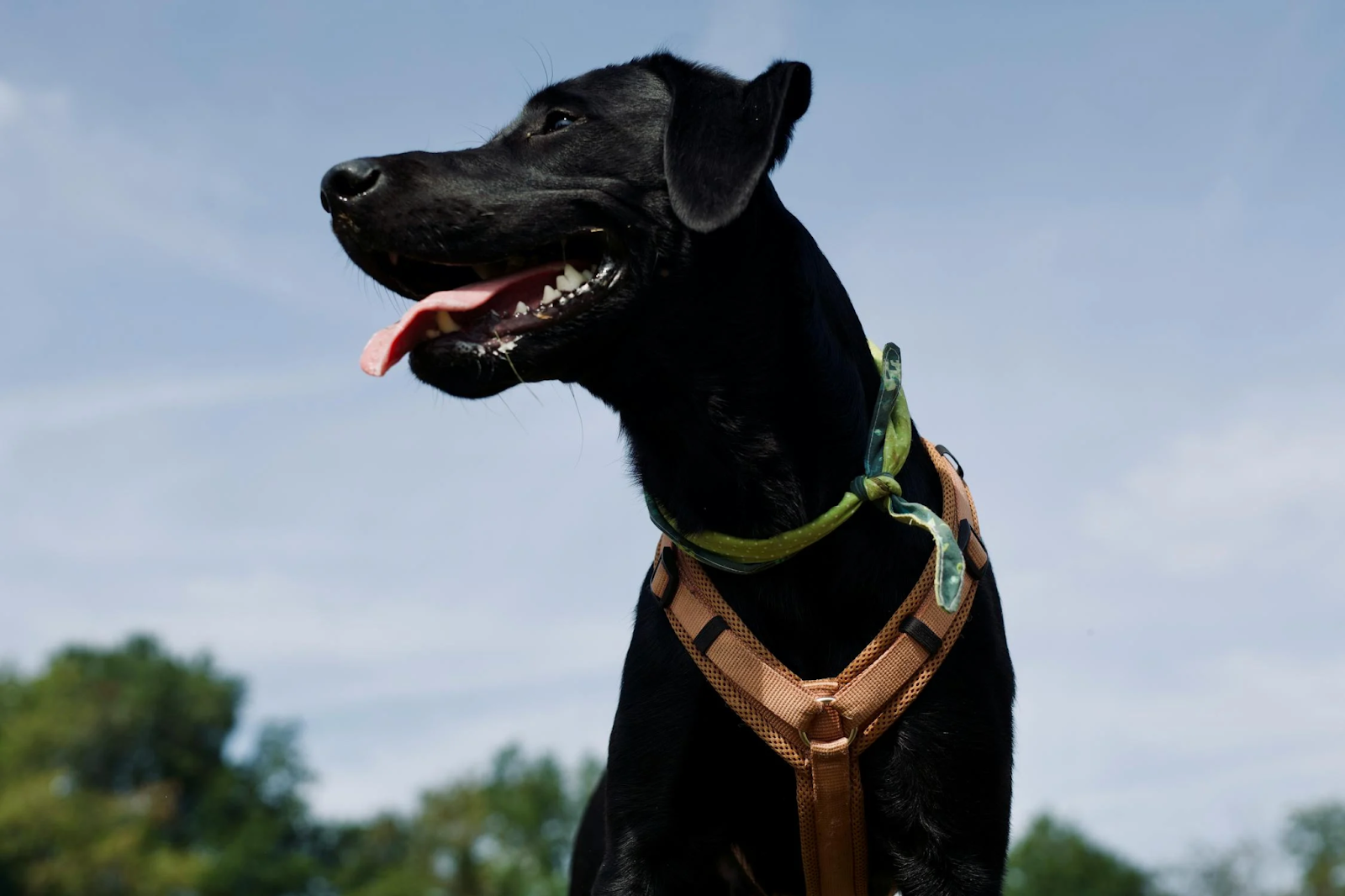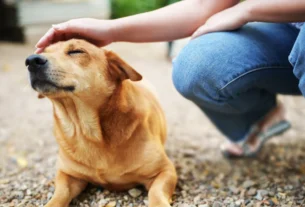A well-fitting collar or harness isn’t just a matter of comfort—it’s a key component of your dog’s health and safety. When a collar or harness doesn’t fit properly, it can lead to a variety of issues ranging from skin irritation to escape risks. This guide walks you through the key signs that your dog’s collar or harness may not be fitting correctly, the implications of improper fit, and actionable solutions to help you correct the issue.
Why Fit Matters More Than You Think
Choosing between dog collars and dog harnesses is an important decision, but ensuring that either option fits correctly is equally critical. Ill-fitting gear can negatively impact your dog’s behavior, health, and safety during walks or training. The right fit should offer security without restriction, comfort without compromise.
Common Signs of a Poor Fit
1. Visible Discomfort or Chafing
One of the first signs of a poorly fitting collar or harness is physical irritation. If your dog constantly scratches at the collar area or you notice red or bald patches around the neck, shoulders, or chest, the fit may be too tight or the material may be causing friction. Harnesses that rub under the arms or across the chest can also cause discomfort.
Fix: Check for proper spacing. You should be able to slide two fingers under the collar or between the harness and your dog’s body. Consider switching to softer materials or padded designs if skin irritation continues.
2. Escape Attempts or Frequent Slipping
If your dog regularly slips out of their collar or harness, it’s likely too loose. This not only renders the gear ineffective but also poses a serious safety risk, especially in crowded or high-traffic areas.
Fix: Re-measure your dog’s neck and chest, and compare those measurements to the sizing chart of the product. Look for adjustable options with secure closures. For dogs with narrow heads or flexible bodies, martingale collars or harnesses with chest and belly straps may offer more security.
3. Restricted Movement
Overly tight harnesses or collars can limit your dog’s natural movement, causing them to walk awkwardly, resist leash walking, or even limp. You may also notice that your dog is reluctant to go for walks or shows signs of stress when the gear is being put on.
Fix: Observe your dog while walking. A well-fitting harness should not restrict shoulder movement or apply pressure to the throat. Adjust straps to allow freedom of movement without being so loose that they shift excessively.
4. Changes in Breathing or Vocalization
Pressure on the throat or chest due to an improperly fitted collar or harness can interfere with breathing. If your dog starts coughing, wheezing, or making unusual vocalizations while wearing their gear, it may be pressing on sensitive areas.
Fix: Consider switching from a collar to a harness that distributes pressure across the chest and shoulders instead of the neck. Ensure there is no tightening mechanism around the throat area.
5. Gear Rotates or Slides Around
When a collar spins around the neck or a harness slides out of position, it’s not doing its job effectively. Misaligned gear can cause chafing, interfere with control, and shift into sensitive areas.
Fix: Check the tightness and symmetry of each strap. Some dog harnesses come with extra points of adjustment to ensure a snug and centered fit. Make sure all clips and fasteners are correctly positioned.
Key Fit Factors to Consider
1. Breed and Body Shape
Different breeds have different builds. For example, Greyhounds have narrow heads and may need martingale collars, while stocky breeds like Bulldogs require harnesses designed to accommodate broad chests.
Tradeoff: A harness designed for a general fit might not work well for dogs with non-standard body types. While custom-fit products may provide better comfort, they often come at a higher price point.
2. Material and Design
Materials like nylon, leather, neoprene, and mesh all behave differently. Heavier materials provide durability but may lack flexibility, while soft materials offer comfort but may wear out faster.
Tradeoff: Choosing softer materials can reduce chafing but may compromise long-term durability. Prioritize based on your dog’s daily activities.
3. Growth Stage
Puppies and adolescent dogs grow quickly, which can cause a properly fitted collar or harness to become tight within weeks.
Tradeoff: Adjustable gear accommodates growth but may still require frequent monitoring and readjustment. For rapidly growing puppies, check the fit every two weeks.
4. Clip Position and Control Points
Front-clip harnesses offer better control for pullers, while back-clip options provide comfort and are easier to use. Some harnesses include dual-clip systems for versatility.
Challenge: Finding a harness that balances control and comfort can be tricky. Evaluate your walking environment and your dog’s behavior before choosing.
How to Measure Correctly
A key step in ensuring proper fit is accurate measurement. Use a flexible measuring tape and take the following measurements:
-
Neck circumference: For collars, measure where the collar would normally sit.
-
Chest girth: For harnesses, measure the widest part of the ribcage.
-
Lower neck/chest: Some harnesses wrap lower than others, so check for product-specific guidelines.
Record these measurements and cross-reference them with sizing charts. Always round up when your dog is between sizes and look for gear with multiple adjustment points.
Adjusting the Fit: Tips and Techniques
-
Start with loose straps: Put the gear on and then gradually tighten until secure.
-
Check alignment: Make sure D-rings, buckles, and straps are in their intended positions.
-
Monitor pressure points: Observe where the gear makes contact and watch for signs of discomfort.
-
Check daily: Dogs can gain or lose weight, and straps can loosen over time.
When to Replace, Not Adjust
Sometimes, no amount of adjusting can fix the problem. Here are signs it’s time to replace the collar or harness:
-
Frayed or torn material
-
Buckles that won’t snap securely
-
Straps that constantly slip out of place
-
Rust or wear on hardware
In these cases, investing in new gear is better than risking your dog’s safety.
Special Considerations for Puppies and Senior Dogs
Puppies require more frequent checks due to rapid growth and teething behaviors that may damage gear.
Senior dogs may have arthritis or other sensitivities. Lightweight, easy-to-use harnesses that avoid pressure on joints are ideal.
Understanding the Behavioral Clues
Dogs often give subtle signs that their gear isn’t comfortable:
-
Sudden refusal to go on walks
-
Tail tucked or ears back during fitting
-
Chewing at the collar or harness
Behavioral cues can be just as important as physical signs when assessing fit. Always pay attention to changes in your dog’s demeanor.
Training Tips to Reinforce Positive Associations
Even perfectly fitting gear can cause distress if a dog associates it with negative experiences. Use these training tips to build positive associations:
-
Desensitize gradually: Let your dog sniff and interact with the collar or harness before putting it on.
-
Reward consistently: Use treats or praise during and after fitting.
-
Keep sessions short: Especially at first, avoid keeping the gear on for too long.
Balancing Function and Fashion
While aesthetics matter to many pet parents, it’s important not to sacrifice function for fashion. Prioritize well-constructed, safe, and adjustable dog collars and dog harnesses before looking at colors or embellishments.
Example: A rhinestone-studded collar might look cute but could irritate the skin or be difficult to clean.
Choose gear that suits both your lifestyle and your dog’s needs. Many modern designs offer both utility and visual appeal.
Final Thoughts
Your dog relies on you to make decisions that impact their daily comfort and safety. Ensuring a proper fit for collars and harnesses is more than a routine check—it’s a form of ongoing care. With the right approach to fit, material, and training, you can improve your dog’s experience on every walk, outing, and adventure.
Be observant. Be consistent. And most importantly, let your dog’s behavior and comfort guide your decisions.
Whether you’re dealing with an escape artist, a puller, or a laid-back companion, proper gear fit is essential for a happier, healthier life together.




